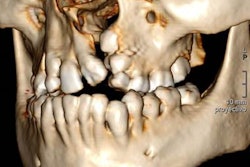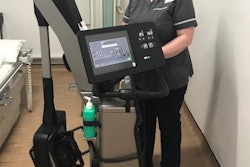Dear CT Insider,
When it comes to complex head and neck cases, CT tends to be in a league of its own, as Spanish researchers underlined in an award-winning presentation at the RSNA 2017 meeting in Chicago.
The multidisciplinary group from Barcelona has extensive experience with imaging and treating difficult cleft lip and palate cases, dealing with around 35 new patients each year. To find out more about the team's approach and technique -- and to view some impressive clinical images -- click here.
Radiation dose tracking software continues to improve and can be valuable in collecting, analyzing, and benchmarking the CT data of children and young adults. The results of a recently published study involving 1,500 pediatric CT exams of the head and cervical spine at two hospitals in Finland are worth a close look. Click here to do so.
Missed lung nodules are an ongoing concern for the global medical imaging community. New research presented at RSNA 2017 found that missed lesions resulted in a postponed diagnosis of lung cancer by more than 13 months in nearly 34% of patients. Get the story here.
In malignant melanoma cases, cardiac metastases occur increasingly often and can involve every part of the heart, so developing awareness of different types of metastases and their appearance on CT is essential, said researchers from Tübingen, Germany. The group has elaborated on this topic with a new study. To get the findings, click here.
A deadly, slimy, underworld predator that's barely changed in 400 million years -- that's how the Smithsonian Channel has described velvet worms. German scientists have used CT to study these captivating critters, and their images are quite stunning. To see them and to learn about the researchers' methods, click here.
This letter features only a selection of the many articles published over the past month or so in the CT Community. Please scroll through the full list of our coverage below.



















